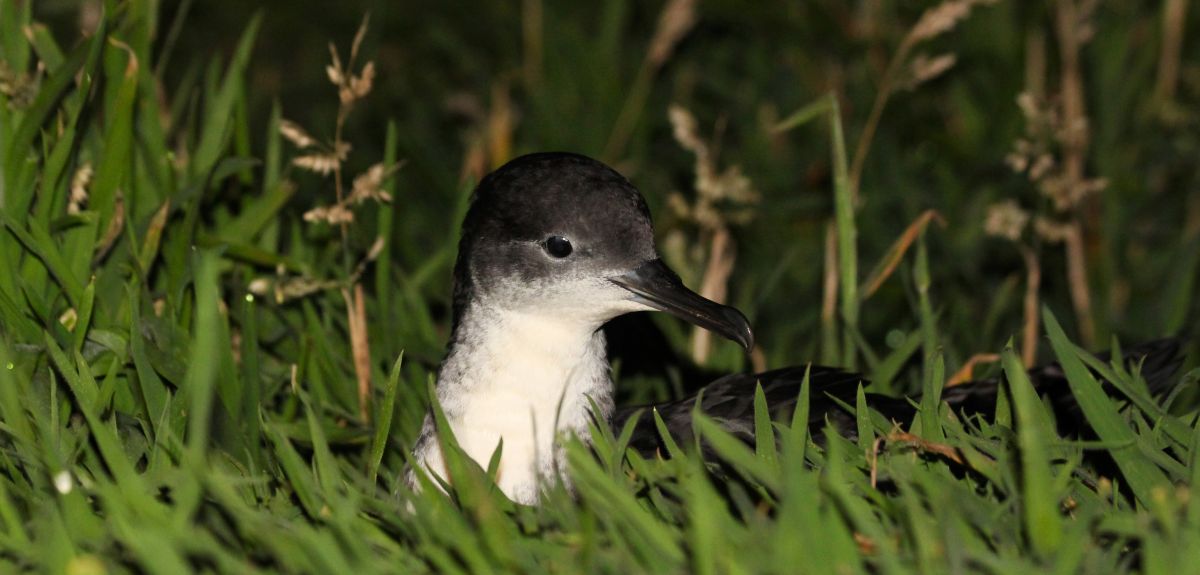
Image credit: Annette Fayet
Manx shearwater revival: Oxford research sheds new light on enigmatic seabird
They are a common sight off the UK's west coast in summer, but we still have much to learn about the Manx shearwater, a remarkably long-lived Atlantic marine bird.
Ongoing research by Oxford scientists, however, is expanding what we know about the behaviour of the Manx shearwater (also known as Puffinus puffinus – not to be confused with the Atlantic puffin).
Fourth-year Zoology DPhil student Annette Fayet has just completed a piece of research looking at the relative foraging success of young and mature birds.
Annette, who works in the Oxford Navigation Group led by Professor Tim Guilford, said: 'Our project aimed to compare immature (non-breeding) and breeding seabirds, and to answer the question of whether there are any differences in how they forage at sea, including any segregation between them.
'We know very little in general about what immature seabirds do while they're at sea, so there is lots of scope for research and for learning more about their behaviour. The Manx shearwater is no exception to this – and, indeed, they are particularly interesting because they can live for more than 50 years and don't start breeding until they are around five years old.'
The study, published in the journal Animal Behaviour, found that there was substantial segregation between immature and breeding birds on their foraging trips. The young birds also put on less weight during their trips, suggesting they were less successful in finding food.
Annette said: 'We deployed miniature GPS trackers on immature and breeding birds on the large Manx shearwater colony of Skomer, off the Pembrokeshire coast.
'We tracked their foraging trips at sea, which lasted for up to 15 days, and used the GPS data to identify different behaviours at high resolution – for example, when they were flying at speed, foraging, or simply sitting on the water. We also weighed the birds before and after their trips to measure the mass gained during the trip.
'What we found was substantial spatial segregation between younger individuals and breeding birds, while the non-breeding younger birds also gained less mass per unit of time spent foraging, suggesting a lower foraging efficiency.'
The study was one of the first to track immature birds at sea – not an easy task – and the first to directly compare foraging distributions and foraging efficiency between immature and breeding seabirds.
Annette said: 'Our results suggest that immature Manx shearwaters are less efficient when it comes to foraging. They are also foraging in areas with lower productivity than breeders, which we found by looking at data obtained by satellites that estimate how good an area is in terms of resource availability.
'Perhaps they simply need a few years to learn how to forage effectively – we don't think the segregation is a result of aggressive competition by more experienced adult birds. Nor do we think size is an issue, like in other animals, as bigger adult birds are not more efficient than smaller ones.
'It may be that they're not good at finding productive areas, or that the gain of foraging in an area with fewer adults outweighs the cost of foraging in a less productive area.'
Annette added: 'Research like this is important because it addresses central questions in population dynamics, emphasising the role of learning and experience in the life-history tactics of long-lived species.
'It also has important applications for the conservation of these species by identifying important foraging areas, which can help inform future decisions on conservation. These young birds are the next generation of breeders, and we need to learn as much as we can if we want to protect them.'